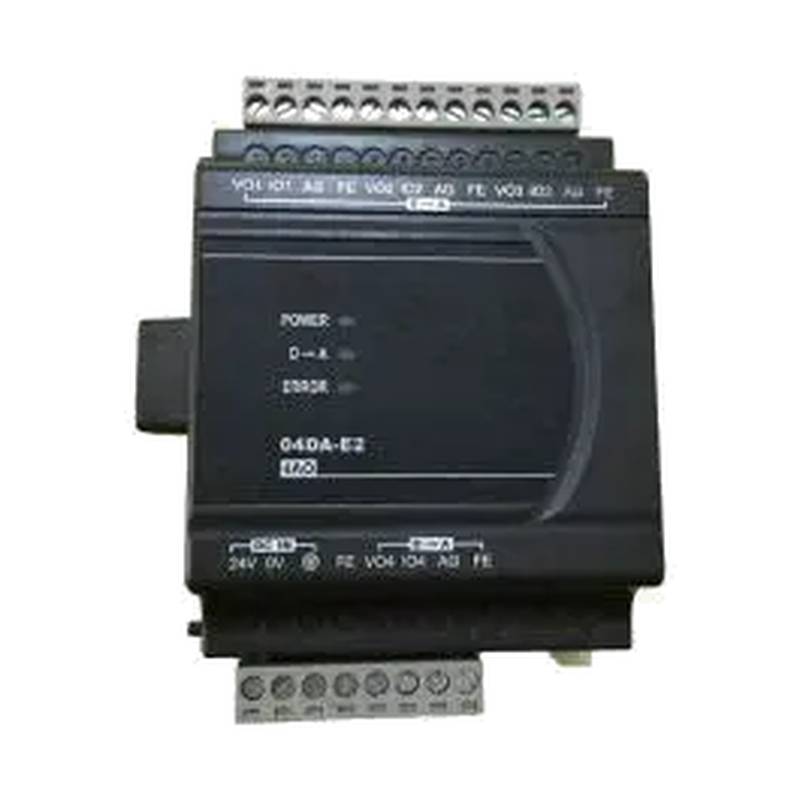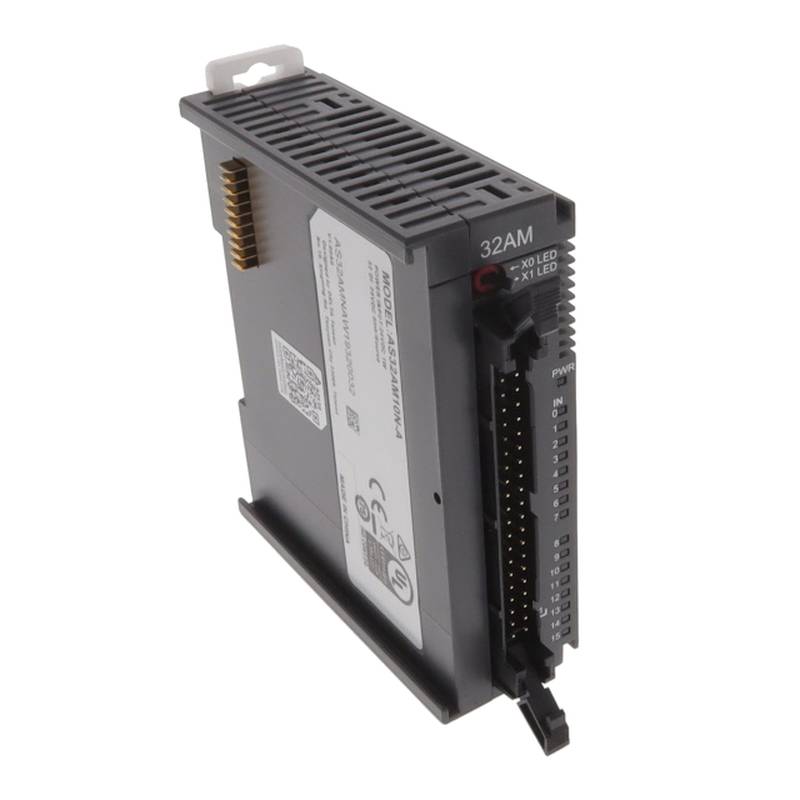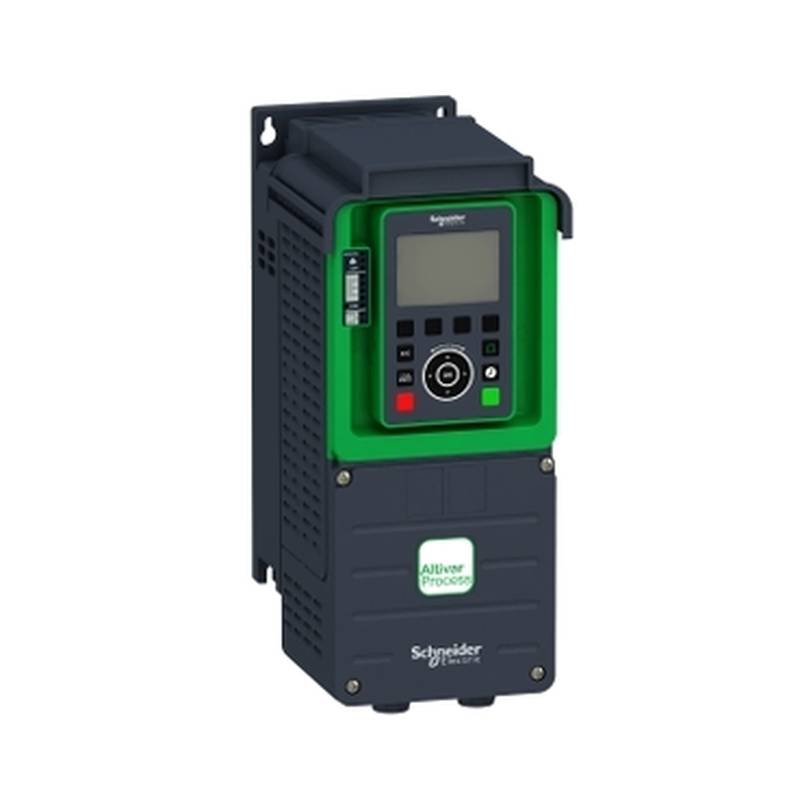
The Moxa CP-104EL-A is a high-performance, 4-port RS-232/422/485 industrial multi-port serial board designed to deliver robust and reliable serial communication for demanding industrial environments. Leveraging Moxa's advanced TurboR and TurboGX technologies, this PCIe interface board ensures low CPU load and high data throughput, making it an ideal solution for applications requiring extended data buffering and rapid communication. Key technical parameters include its PCIe interface, 4 RS-232/422/485 ports, and support for data rates up to 921.6 kbps. Its ability to function in extended temperature ranges further solidifies its position as a superior choice for critical industrial automation and control systems.
Product Specifications
| Feature | Specification |
| :----------------------- | :---------------------------------------------------------------------------------- |
| Interface | PCIe x1 |
| Number of Ports | 4 (RS-232/422/485 selectable) |
| Data Bits | 5, 6, 7, 8 |
| Stop Bits | 1, 1.5, 2 |
| Parity | None, Even, Odd, Space, Mark |
| Flow Control | None, XON/XOFF, RTS/CTS |
| Baud Rate | 50 bps to 921.6 kbps |
| Serial Port Connection | DB37 female connector (requires breakout cable) |
| FIFO Buffer | 256-byte hardware FIFO for each port |
| CPU Load Reduction | TurboR technology for intelligent interrupt handling |
| Operating Temperature | -40 to 85 °C (with industrial-grade components) |
| Supported Operating Systems | Windows, Linux, UNIX |
| Dimensions | 150 x 100 mm (standard PCIe card size) |
Core Features & Market Positioning
The Moxa CP-104EL-A distinguishes itself in the industrial communication market through its robust design and advanced technological features. Its primary advantage lies in the integration of Moxa's proprietary TurboR technology, which significantly reduces CPU overhead by intelligently managing serial data flow and interrupts. This is crucial for systems where the CPU is heavily utilized by other critical processes. Furthermore, the board offers full RS-232/422/485 compatibility on all four ports, providing exceptional flexibility for connecting a wide array of legacy and modern serial devices. The high baud rate support up to 921.6 kbps ensures efficient data transfer for bandwidth-intensive applications, setting it apart from standard serial controllers. Its industrial-grade components and extended operating temperature range (-40 to 85 °C) underscore its reliability in harsh industrial settings, positioning it as a go-to solution for mission-critical deployments where downtime is not an option.
Key Application Scenarios
The versatility of the Moxa CP-104EL-A makes it indispensable across numerous industrial sectors. In manufacturing automation, it facilitates seamless communication between Programmable Logic Controllers (PLCs), Human-Machine Interfaces (HMIs), and various sensors, ensuring efficient process control and data acquisition on the factory floor. For building automation, it enables centralized control of HVAC systems, lighting, and security through diverse serial devices. In the transportation industry, it's employed for managing traffic control systems, ticketing machines, and onboard communication equipment. Furthermore, its reliability is vital in utilities and energy management for monitoring and controlling remote substations, power grids, and environmental sensors, often in challenging outdoor or geographically dispersed locations. The ability to connect multiple serial devices simultaneously, regardless of their protocol (RS-232, 422, or 485), makes it a foundational component for any system requiring robust serial connectivity.
Practical System Integration Guidance
Integrating the Moxa CP-104EL-A into an existing system is straightforward due to its standard PCIe interface and comprehensive driver support. Installation involves physically inserting the card into an available PCIe slot on the host industrial PC or embedded system. Following hardware installation, the appropriate drivers for the host operating system (Windows, Linux, or UNIX) must be installed, which are readily available from Moxa's official support portal. For connecting serial devices, a standard DB37 to multiple DB9 or terminal block breakout cables are required, depending on the specific pinouts and connector types of the connected equipment. Careful attention to RS-232, RS-422, and RS-485 mode selection via software or DIP switches (if applicable to the specific model revision) is essential to ensure correct communication with each device. Moxa's powerful Windows COM port management utility and Linux device file system integration simplify the configuration and assignment of COM port numbers or device names, streamlining the commissioning process.
Operation and Risk Mitigation
Operating the Moxa CP-104EL-A reliably hinges on adhering to best practices for industrial serial communication. Ensure that all serial cable connections are secure and properly shielded to prevent electromagnetic interference (EMI), a common cause of data corruption in industrial environments. When configuring port settings (baud rate, data bits, parity, stop bits, flow control), meticulously match these parameters to the specifications of the connected serial devices to avoid communication failures. For RS-485 multidrop networks, proper termination resistors (typically 120 ohms) must be installed at both ends of the bus to prevent signal reflections, especially at higher baud rates or over longer cable runs. While the CP-104EL-A is built with industrial-grade components for enhanced durability, avoiding extreme temperature fluctuations beyond its specified range and protecting it from physical shocks and vibration will further prolong its operational lifespan and prevent potential hardware failures.
Scalability & Long-Term Value
The Moxa CP-104EL-A offers significant scalability and long-term value, primarily through its robust compatibility and integration capabilities within modern industrial ecosystems. As a PCIe card, it can be easily added to systems with available slots to expand serial port density, allowing for the connection of more devices as operational needs grow. Its support for multiple operating systems ensures that it remains a viable solution even when migrating to newer software platforms. Furthermore, Moxa's commitment to industrial communication standards means the CP-104EL-A integrates seamlessly with a wide range of industrial automation hardware and software, including SCADA systems, data loggers, and IIoT gateways. This forward-looking design facilitates its incorporation into future digital transformation initiatives, ensuring that investments in serial communication infrastructure continue to yield returns as industries embrace more connected and intelligent operational paradigms.
Frequently Asked Questions
1. What are the primary advantages of the Moxa CP-104EL-A for industrial use?
The Moxa CP-104EL-A offers industrial-grade reliability and high-speed data transfer. Its TurboR technology minimizes CPU load for efficient system performance. The board supports flexible RS-232/422/485 communication on all ports.
This board excels in harsh environments due to its extended operating temperature range. It ensures consistent data integrity and device communication. Its robust design leads to reduced downtime.
Key benefits include increased system responsiveness and the ability to connect diverse serial devices. This makes it a cost-effective solution for complex industrial networks.
2. How do I select the correct serial mode (RS-232, 422, or 485) for each port?
The serial mode selection is typically managed through software utilities provided by Moxa. These utilities allow you to configure each of the four ports individually. You will need to consult the product's manual for specific instructions.
Alternatively, some older revisions might use physical jumpers or DIP switches on the board itself for mode selection. Always verify your specific board revision and follow its documentation.
Ensure the selected mode precisely matches the requirements of the serial device connected to that port to establish reliable communication. Incorrect mode selection will result in communication errors.
3. What is the maximum supported baud rate and its implications?
The Moxa CP-104EL-A supports a maximum baud rate of 921.6 kbps. This high speed is crucial for applications requiring rapid data exchange. Examples include high-resolution sensor readings or fast data logging.
Higher baud rates can increase the risk of data errors, especially over long cable distances. Proper cabling, shielding, and termination (for RS-485) are essential to maintain data integrity at these speeds.
This capability ensures the board can handle demanding modern industrial protocols and applications. It future-proofs your serial communication infrastructure.
4. What operating systems are compatible with the Moxa CP-104EL-A?
The CP-104EL-A is designed for broad compatibility, supporting major industrial operating systems. This includes various versions of Windows and Linux. Moxa also provides support for certain UNIX variants.
Specific driver versions are available for each supported OS, ensuring optimal performance and stability. Always download the latest drivers from Moxa's official website for your specific OS.
This cross-platform support allows for flexible deployment across different hardware and software environments. It simplifies integration into existing or new systems.
5. Can I use the Moxa CP-104EL-A with RS-485 multidrop networks?
Yes, the Moxa CP-104EL-A fully supports RS-485 communication, making it ideal for multidrop configurations. You can connect multiple devices to a single bus. This is common in industrial automation and control systems.
For reliable RS-485 multidrop operation, proper bus termination is critical. Typically, 120-ohm termination resistors are required at both ends of the data cable. This prevents signal reflections and ensures data accuracy.
Ensure you correctly wire the A/+ and B/- lines for each device and follow multidrop wiring best practices to avoid communication issues. Moxa's drivers and utilities help manage these configurations.
6. What are common troubleshooting steps for communication issues?
First, verify that the serial port settings (baud rate, parity, data bits, stop bits) on the board match those of the connected device. Double-check your cabling for secure connections and correct wiring.
Ensure the correct driver is installed and the serial port is recognized by the operating system. Check the physical mode setting (RS-232/422/485) on the board or via software.
For RS-485, confirm correct termination and check for bus contention or short circuits. Review Moxa's diagnostic tools or serial port monitoring software to analyze data traffic.
7. What is TurboR technology and how does it benefit the CP-104EL-A?
TurboR technology is Moxa's proprietary solution for intelligent serial communication. It significantly optimizes interrupt handling and data buffering. This drastically reduces the load on the host CPU.
By minimizing CPU usage, TurboR allows the host system to allocate more processing power to other critical applications. This leads to improved overall system performance and responsiveness.
This technology ensures high data throughput even under heavy communication loads, making the CP-104EL-A highly efficient for demanding industrial tasks. It enhances system stability.
8. What is the significance of the extended temperature range (-40 to 85 °C)?
The extended operating temperature range signifies the board's resilience in demanding industrial environments. It ensures reliable performance in locations with extreme heat or cold. Examples include outdoor enclosures or unconditioned factory floors.
This rugged design reduces the risk of hardware failure due to thermal stress. It guarantees continuous operation where standard components might fail. This is critical for mission-critical applications.
Using industrial-grade components across the board contributes to this enhanced temperature tolerance and overall durability. It provides peace of mind for long-term deployment.
9. What type of connector does the CP-104EL-A use, and what accessories are needed?
The Moxa CP-104EL-A features a DB37 female connector for its four serial ports. This is a compact connector that consolidates multiple serial connections. You will need specific breakout cables to connect to standard serial interfaces like DB9 or terminal blocks.
Moxa offers a range of official DB37 breakout cables designed for different pinouts and connector types (e.g., DB9 male/female, terminal blocks). Ensure you select the cable that matches your connected devices.
Always purchase reputable breakout cables to ensure proper signal integrity and reliable connections. The quality of the cable directly impacts communication performance.
10. How does the CP-104EL-A contribute to IIoT and digital transformation initiatives?
The CP-104EL-A acts as a vital bridge, connecting legacy serial devices to modern digital networks. It enables the collection of data from older equipment for analysis and integration into IIoT platforms. This extends the life of existing assets.
By providing reliable, high-speed serial connectivity, it facilitates the deployment of sensors and controllers essential for smart factories and Industry 4.0 concepts. It ensures data flows seamlessly from the edge to the cloud.
Its robust design and broad compatibility ensure that it remains a foundational element for industrial data acquisition and control systems during digital transformation. It supports future scalability.























